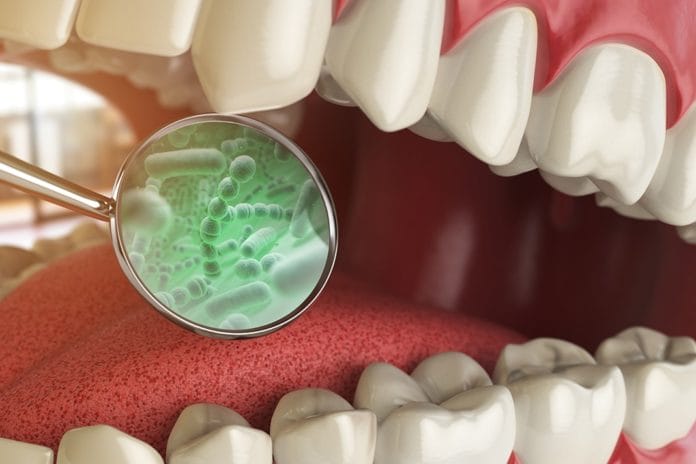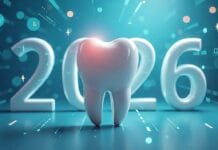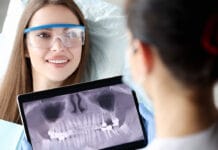Functional medicine is not a new concept, but it is gaining in popularity.1 A progressive hybrid of holistic and Western medicine, functional medicine aims not only to control the symptoms of disease but focus instead on the causes of disease. Dental hygienists spend much of their time combating the pathogenesis of periodontal disease, prompting the question: Are we treating the symptom or the cause?
New guidelines published in 2018 by the American Academy of Periodontology separate periodontal disease into categories associated with systemic health, not just pocket depths.2 When classifying a person’s risk for periodontal disease, one must take it a step further than before. Are they at high risk for chronic periodontal disease or aggressive disease? This leads to the discussion of whether our current therapies are taking a functional approach.
Periodontal disease can arise in a variety of ways. It can begin with local contributing factors such as heavy, long-standing biofilm and overhangs and restorations that impinge on the biologic width. However, the development of periodontal disease can begin and exist in the absence of all of those things. This is when environmental and systemic factors come into play. Does the patient have other inflammatory diseases? Do they smoke, have poorly controlled diabetes, or do they take immunosuppressive drugs as a part of their daily lives2
This article will aim to help hygienists identify those patients with a high risk for aggressive periodontal disease, the therapies that work best, and the consequences of refraining from taking a functional approach.
The Right Time for Antimicrobials
Let’s talk about antimicrobials. Studies have shown large strides both in the availability of research and interest in the concept of a microbiome.1,3,4 It has been demonstrated that certain pathogens, such as Porphyromonas gingivalis, play large roles in the microbial population of an active periodontal pocket.3,5-7 However, the question looms: When we eliminate one pathogen, sometimes present at ten times that of a healthy pocket’s microbial population, what bacteria will fill the gap?3,6,7
Furthermore, antimicrobial resistance is another possibility that further increases the need to identify a person’s risk profile as local or systemic. Antimicrobial resistance is largely related to an inappropriately prescribed chemotherapeutic agent, either insufficient in dosage or rendered unnecessarily.8
When placing an antimicrobial on someone with an easily eliminated local factor that will most likely resolve their disease, are we utilizing antimicrobials unnecessarily? When utilizing narrow-spectrum antimicrobials to eliminate one species of bacteria, could we be causing more harm than good by disrupting a person’s natural oral microbiome? Will this lead to periodontal infections more so than what we have seen before, those led in numbers by pathogens unaffected, tolerant, or resistant to our available antimicrobials?6,8
However, when placing those antimicrobials on an appropriately selected patient, should we be supplementing with probiotics to fill the gaps on purpose with the right bacteria?9 Studies have shown that there is more to the development of a periodontal biofilm than a simple accumulation and lack of removal. Certain bacteria can actually facilitate the attachment of other, select bacteria in the biofilm.5 Do we have the potential to discourage the development of a biofilm simply by adding the right bacteria?9
In conclusion, hygienists must be discriminatory in their treatment planning when placing antimicrobials. A blanket periodontal protocol for all patients should not exist. One must ask: What is the causative factor? If that cause is a local factor, eliminate it by non-surgical periodontal therapy alone or the resolution of a contributing iatrogenic restorative element.
However, if the cause is an environmental or systemic factor and the progression of disease seems to continue even in the absence of biofilm or local contributing agents, antimicrobials may be just what we need in the fight to alter their oral microbiome.2,3,5-7 Treatment of those patients should be deferred until systemic inflammation is controlled.2 This is easily identified by a comprehensive health check, review of medications, and blood pressure screening at the beginning of the appointment.
Treating a person before generalized inflammatory diseases are controlled is setting the patient up for failure.2 If the treatment is rendered during an active swing of their systemic disease, it increases the chance that the disease will not resolve, elevating the likelihood of antimicrobial resistance or tolerance.2,8 Think about the functional approach and the fact that their systemic health is the cause of their disease. Stop treating the symptoms and start treating the cause.
As with many of the recent articles that have emerged regarding the oral microbiome, more studies are needed. For now, may our curiosities about the pathogenicity of periodontal disease lead the immunologists, microbiologists, and the functional medicine community to pay attention to this lack of literature. May our hygienists continue to fuel the fight to identify the best therapies and most effective protocols for the successful treatment and maintenance of periodontal patients.
Before you leave, check out the Today’s RDH self-study CE courses. All courses are peer-reviewed and non-sponsored to focus solely on high-quality education. Click here now.
Listen to the Today’s RDH Dental Hygiene Podcast Below:
References
- Gilbert, J.A., Blaser, M.J., Caporaso, J.G., et al. Current Understanding of the Human Microbiome. Nat. Med. 2018; 24(4): 392-400. https://www.ncbi.nlm.nih.gov/pmc/articles/PMC7043356/
- Caton, J., Armitage, G., Berglundh, T., et al. A New Classification Scheme for Periodontal and Peri-implant Diseases and Conditions – Introductions and Key Changes from the 1999 Classification. J Periodontol. 2018; 89(S1): S1-S8. https://aap.onlinelibrary.wiley.com/doi/10.1002/JPER.18-0157
- Costalonga, H., Herzberg, M.C. The Oral Microbiome and the Immunobiology of Periodontal Disease and Caries. Immunol Lett. 2014; 162(2 Pt A): 22-38. https://www.sciencedirect.com/science/article/abs/pii/S0165247814001874
- Gupta, G. Probiotics and Periodontal Health. J Med Life. 2011; 4(4): 387-394. https://www.ncbi.nlm.nih.gov/pmc/articles/PMC3227153/
- Lovegrove, J.M. Dental Plaque Revisited: Bacteria Associated with Periodontal Disease. J N Z Soc Periodontol. 2004; (87): 7-21. https://pubmed.ncbi.nlm.nih.gov/15143484/
- Mira, A., Simon-Soro, A., Curtis, M.A. Role of Microbial Communities in the Pathogenesis of Periodontal Diseases and Caries. J Clin Periodontol. 2017; 44(Suppl. 18): S23-S38. https://onlinelibrary.wiley.com/doi/pdf/10.1111/jcpe.12671
- Hajishengallis, G., Lamont, R.J. Breaking Bad: Manipulation of the Host Response by Porphyromonas gingivalis. Eur J Immunol. 2014; 44(2): 328-338. https://onlinelibrary.wiley.com/doi/10.1002/eji.201344202
- Li, J., Xie, S., Ahmed, S., et al. Antimicrobial Activity and Resistance: Influencing Factors. Front Pharmacol. 2017; 8: 364. https://www.ncbi.nlm.nih.gov/pmc/articles/PMC5468421/
- Grudianov, A.I., Dmitrieva, N.A., Fomenko, E.V. Use of Probiotics Bifidobaterin and Acilact in Tablets in Therapy of Periodontal Inflammation. Stomatologiia. 2002; 81(1): 39-43.











